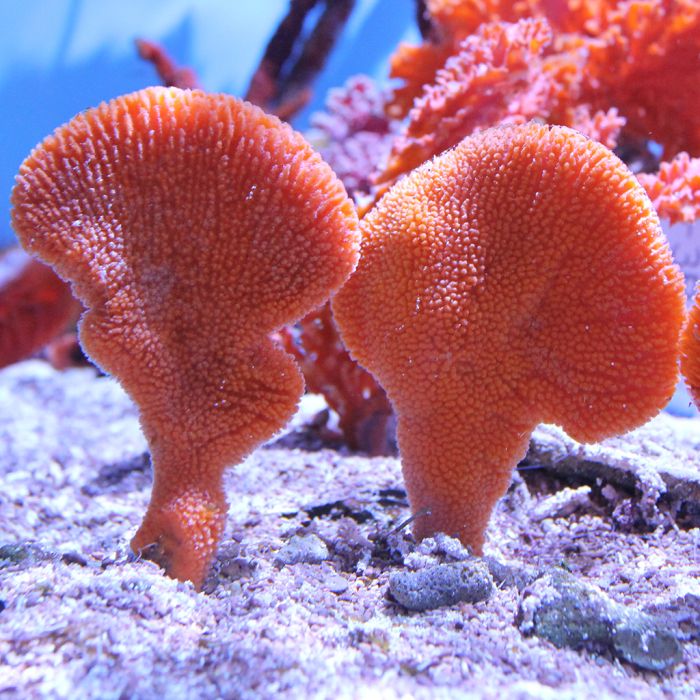Orange Paddle Sponge
This Sponge is completely non-photosynthetic and receives its energy by capturing fine phyto and zooplankton, coral snow and small edible particles which may be found in mature aquariums. Occasionally stirring the sand may release some food items which the sponge may capture- most food utilized is 0.1-1.5 micrometers (typically 0.5 μm or smaller). Most specimens are collected from the Caribbean. We recommend this animal only for expert aquarists who can provide the frequent feedings it demands.
Moderate to strong water flow is essential over all parts of the sponge. Lateral flow should be used, with the sponge’s oscula facing down-wind; improper placement will cause closure of the oscula. Never use wave or surge action, or point-source powerheads, which may damage the animal’s delicate structure. Water flow will deliver food to the sponge and remove wastes, and also help to clear nuisance algae, cyanobacteria and debris. Lower lighting or shade should be used to discourage algae overgrowth; as well, for some species bright light is actually damaging. Sponge should never be exposed to air, as it will become trapped within the animal and cause starvation and necrosis. It should be transferred while underwater. If damage from trapped gasses affects the animal the damaged area should be cut away. Poor water quality is also not tolerated by sponges. It should be inspected for predatory nudibranch which may feed on it.
Many sponges are bright colors, which serves as a warning to predators that they may contain toxins. The toxin may damage other sessile animals if touched, or be released into the water if the sponge is dead or dying. Demosponges such as this are comprised of silica spicules which may be extremely irritating if touched; wearing gloves or only handling the substrate they are attached to is recommended. Sponges make excellent tank-mates with other filter-feeding creatures such as sun, flowerpot, carnation and chili corals, gorgonians, tunicates, clams and oysters which would also benefit from added food.
Intense orange coloration and appealing flattened fan shape makes this animal unmistakable. It adds a dramatic splash of color to a mature reef aquarium. In nature it grows sideways extending from vertical cliffs, and this placement should be replicated in the home aquarium.
- Difficulty: Advanced
- Growth Speed: Slow
- Lighting: Medium - High
- Average Placement: Middle
- Water Flow: Medium - High
- Temperament: Peaceful

